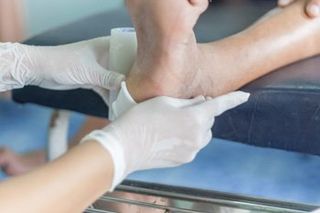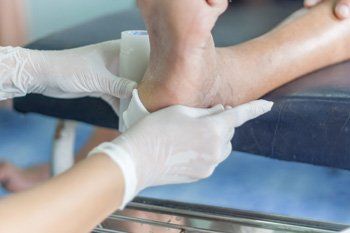MINIMAL WAIT TIME. EXCEPTIONAL SERVICE. CALL AND SPEAK TO OUR STAFF!
DIABETES & YOUR FEET
Diabetes & Your Feet
Did you know that it is possible to grow new nerves in your feet? Well, it’s true! But before we can get to how this can be done, we have to understand how they are lost in the first place.
In diabetes, particularly type II, high levels of harmful chemicals, along with a reduction in beneficial chemicals, cause damage to the interior lining of arteries. In the lower extremity at your feet, the arteries are quite small, and when their lining is damaged, they fail to carry adequately oxygenated blood to the superficial skin nerves. This causes these epidermal skin nerves to be damaged and to slowly die out. This occurs in the hands as well, although less frequently.

Diabetes & Your Feet
Did you know that it is possible to grow new nerves in your feet? Well, it’s true! But before we can get to how this can be done, we have to understand how they are lost in the first place.
In diabetes, particularly type II, high levels of harmful chemicals, along with a reduction in beneficial chemicals, cause damage to the interior lining of arteries. In the lower extremity at your feet, the arteries are quite small, and when their lining is damaged, they fail to carry adequately oxygenated blood to the superficial skin nerves. This causes these epidermal skin nerves to be damaged and to slowly die out. This occurs in the hands as well, although less frequently.

Over the past three years, medical science has learned how to visualize these nerves and has created standards for their measurement. At Central Florida Foot and Ankle Specialists, PA, we have been providing this diagnostic service for our diabetic patients
since its availability. This test is called an epidermal nerve skin density analysis, and only a few dermatopathologists in the country are capable of performing it. Interestingly, some patients complain of foot numbness and have yet to meet the criteria for diagnosis of diabetes. This test also gives us advanced warning of the disease process that is on its way and already causing the first stages of nerve damage. This advanced onset of nerve damage can occur as much as six years before the diagnosis of type II diabetes is made by your primary physician.
Now the good part! Once the count of nerves and their health character has been determined by the pathologist, the podiatrist at Central Florida Foot and Ankle Specialists, PA
will be able to provide our patient with a prognosis for the regrowth of the lost nerves and a return of protective sensorium.
Contact Information
899 Outer Road Ste. C, Orlando, FL, USA 32814
Visit Our Location
Browse Our Website
Contact Information
899 Outer Road Ste. C, Orlando, FL, USA 32814
Visit Our Location
Content, including images, displayed on this website is protected by copyright laws. Downloading, republication, retransmission or reproduction of content on this website is strictly prohibited. Terms of Use
| Privacy Policy

